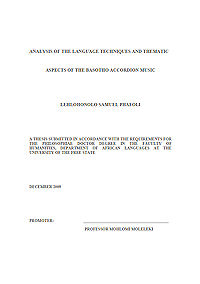| Botswana | Lesotho | Malaŵi | Moçambique | Namibia | South Africa | Swaziland | Zambia | Zimbabwe |
> Lesotho | Books | Articles |

Also see / Voir aussi / Veja também “Africa general – Books“
Coplan, David B[ellin]:
In the Time of Cannibals.
The World Music of South Africa’s Basotho Migrants.
Chicago, Ill.: University of Chicago Press, 1994. 300 p.
Contents
Coplan, David B[ellin] (ed.):
Lyrics of Basotho Migrants.
Translated by Seakhi Santho.
University of Wisconsin-Madison: African Studies Program, 1995. 181 p.
ISBN 978-0-9426-1527-2
Moitse, Sindile Adelgisa:
The Ethnomusicology of the Basotho.
Roma: National University of Lesotho, Institute of Southern African Studies, 1994. 128 p.
ISBN 978-9991-13110-8
Phafoli, Lehlohonolo Samuel:
Analysis of the Language Techniques and Thematic Aspects of the Basotho Accordion Music.
Ph.D. University of the Free State (Bloemfontein), 2009. xi & 276 p.
Contents – PDF Download / Télécharger / Baixar 1.18 MB
Page created 29/09/2017 © afrobib.com

 CONTENTS
CONTENTS CONTENTS
CONTENTS
 CONTENTS
CONTENTS CONTENTS
CONTENTS INHALT (Button Type)
INHALT (Button Type) CONTENTS
CONTENTS